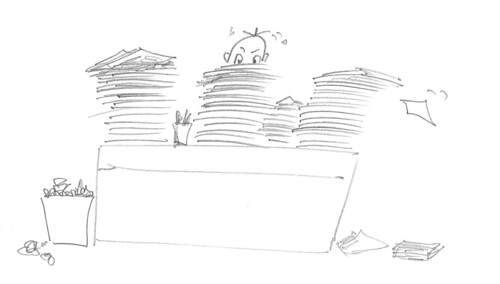For as long as I can recall, people have been hankering after that happy state of affairs where paper is notable only by its absence. Have we reached that stage yet, or is it, at least, in sight?
The reason I ask is that a couple of schools I visited recently have made a good attempt to go paperless. In Harrogate Grammar School, where they have adopted iPads, several teachers told me that they no longer carry reams of paper around with them, because everything they need or are likely to need is at their fingertips.
At the other school, the RSA Academy, I asked the receptionist if I could have a prospectus, in reply to which I was informed that, as a paperless school, they have all that sort of thing on their website rather than printing it out.
Now, I am all in favour of this, if for no other reason than it saves money. I have already commented on the appalling waste of resources occasioned by organisations funded by public money (see Learning from the past; related to that, I never understand why, when you go to an ICT conference, you get given tons of paper).
But let’s take an objective look at this idea of the paperless environment.
Advantages of going paperless
- Money savings, as alluded to above.
- It’s more green, ie some trees are saved (and one hopes that the value of the resources and energy saved is not outweighed by the resources needed to provide wireless connectivity, huge data servers etc. – I’m not entirely convinced to be honest, but still).
- It’s less of a fire hazard to have less paper around.
- It’s easier to carry a tablet or phone around than a great pile of paper.
Advantages of NOT going paperless
- Security. The occasion when my website went down just as I was about to direct a class of trainee teachers to a resources area on it was one time that I was very pleased to have brought along paper copies of everything!
- I find it easier to read paper documents than the same documents on screen. I am not the only one: there are some real differences between reading on-screen and reading on paper, although how significant they are remains an area of debate. See Paper vs Screen: Does it matter any more? for a useful summary.
- It’s easier to annotate documents on paper in my opinion, but again, different strokes for different folk.
- It’s sometimes easier to access paper documents, although in my case I find it easier to find stuff digitally! But if you store everything in the cloud, and you don’t have access to the cloud when you need it, then you have a problem (see my first point in this section).
How to go paperless
It seems to me, therefore, that before a school can go paperless it has to address the points made in the ‘NOT’ section above, ie:
- Ensure constant and fast connectivity to where documents and other resources are stored.
- Encourage people to read documents on-screen wherever possible.
- Provide tools to make annotating digital documents easy.
Is there a halfway house?
If a school can’t go all the way in terms of becoming a paperless environment, there are a few steps it can take in that direction:
- Class management is important. Left to their own devices, kids will print out a new copy of a document as soon as they’ve added a comma. It’s important to have a rule whereby only major revisions warrant a print-out.
- Ideally, the class management perspective should be supported by a whole-school policy on printing which comes down to one simple question: do you need a print-out?
- Have a system of printer credits, particularly the sort of software which allows you to control how much printing of which type is allowed by whom.
- Certainly you should try to identify the source of the largest amounts of printing. I once traced it to the English department, who were printing out class sets of handouts when it would have been much cheaper to have had them photocopied!
In my opinion, the ‘paperless office’ is a worthy goal, and just because it may prove very difficult to achieve is no reason not to try.


